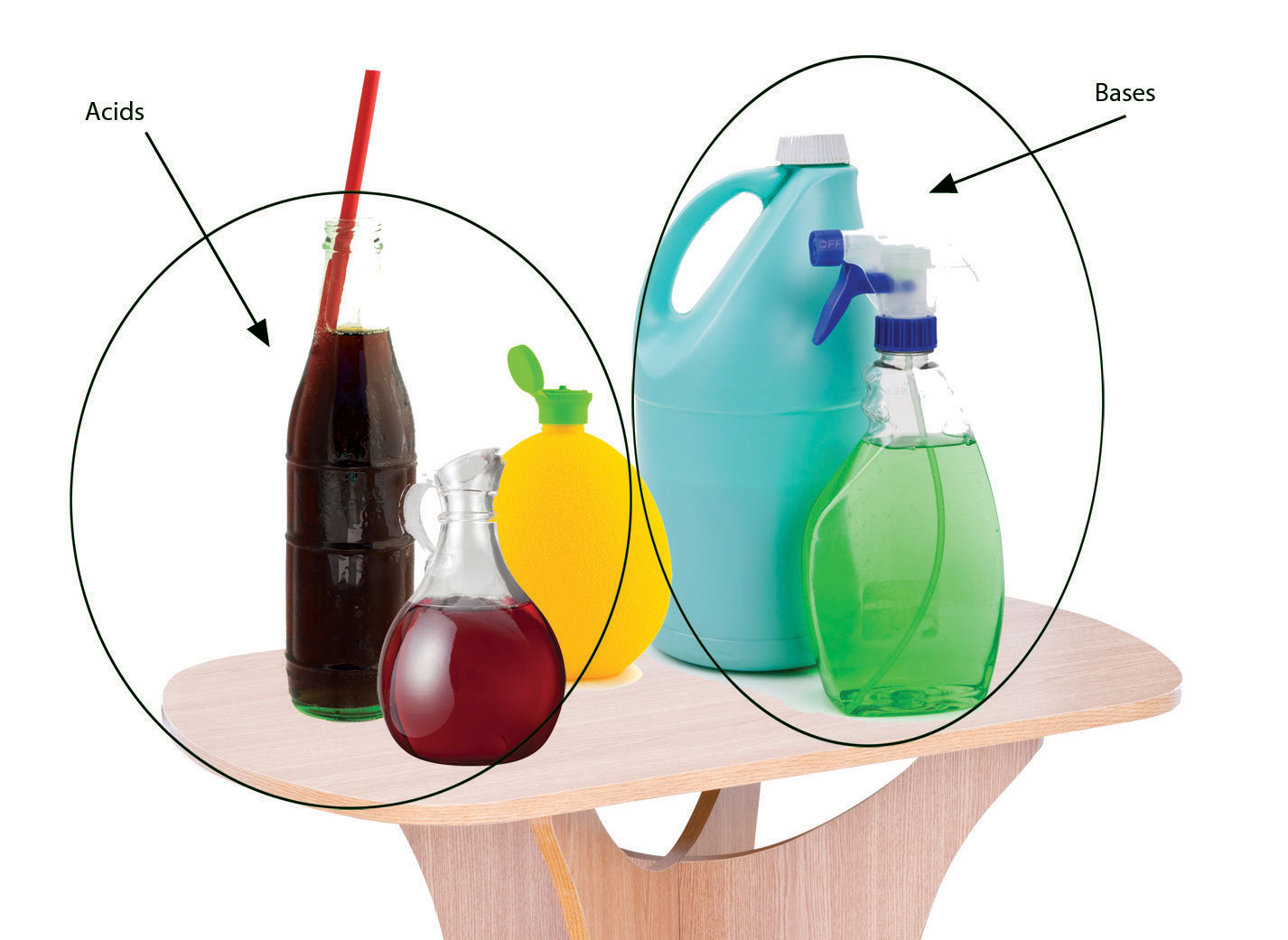This is “Acids and Bases”, chapter 10 from the book Introduction to Chemistry: General, Organic, and Biological (v. 1.0). For details on it (including licensing), click here.
For more information on the source of this book, or why it is available for free, please see the project's home page. You can browse or download additional books there. To download a .zip file containing this book to use offline, simply click here.
Chapter 10 Acids and Bases
Opening Essay
One of the most concentrated acids in the body is stomach acid, which can be approximated as a 0.05 M hydrochloric acid solution. Special cells in the stomach wall secrete this acid, along with special enzymes, as part of the digestion process. In a laboratory, a 0.05 M solution of hydrochloric acid would dissolve some metals. How does the stomach survive the presence of such a reactive acid?
Actually, the stomach has several mechanisms for withstanding this chemical onslaught. First, the lining of the stomach is coated with a thin layer of mucus that contains some bicarbonate ions (HCO3−). These react with the hydrochloric acid to produce water, carbon dioxide, and harmless chloride ions. If any acid penetrates through the mucus, it can attack the surface layer of stomach cells, called the gastric epithelium. Cells in the gastric epithelium are being constantly shed, so damaged cells are quickly removed and replaced with healthy cells.
However, if the gastric epithelium is destroyed faster than it can be replaced, the acid may reach the wall of the stomach, resulting in ulcers. If an ulcer grows large enough, it can expose blood vessels in the stomach wall, causing bleeding. In extreme situations, the loss of blood through a severe ulcer can threaten a person’s health.
Ulcers can also result from the presence of a certain bacterium—Helicobacter pylori—in the stomach. The mechanism for this ulcer formation is not the same as that for ulcers caused by stomach acid and is not completely understood. However, there are two main treatments for ulcers: (1) antacids to react chemically with excess hydrochloric acid in the stomach and (2) antibiotics to destroy the H. pylori bacteria in the stomach.
Many of us are familiar with the group of chemicals called acids. But do you know what it takes for a compound to be an acid? Actually, there are several different definitions of acid that chemistry uses, and each definition is appropriate under different circumstances. Less familiar—but just as important to chemistry and ultimately to us—is the group of chemicals known as bases. Both acids and bases are important enough that we devote an entire chapter to them—their properties and their reactions. Figure 10.1 "Prevalence of Acids and Bases" illustrates how common acids and bases are in everyday life.
Figure 10.1 Prevalence of Acids and Bases

The products shown in this photograph, all acids or bases, give an idea of how prevalent and important acids and bases are in everyday life.
© Thinkstock




